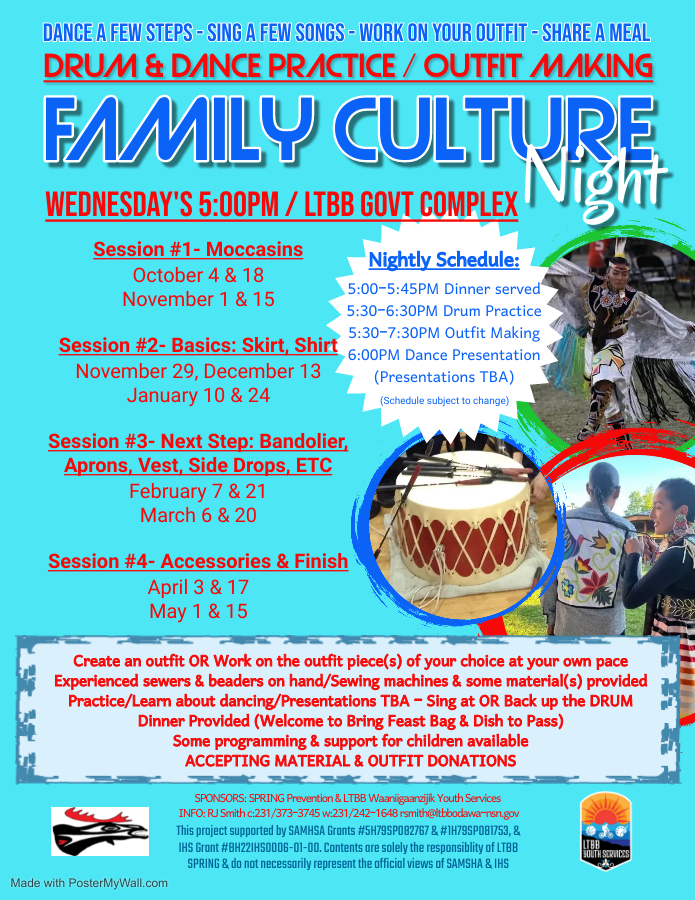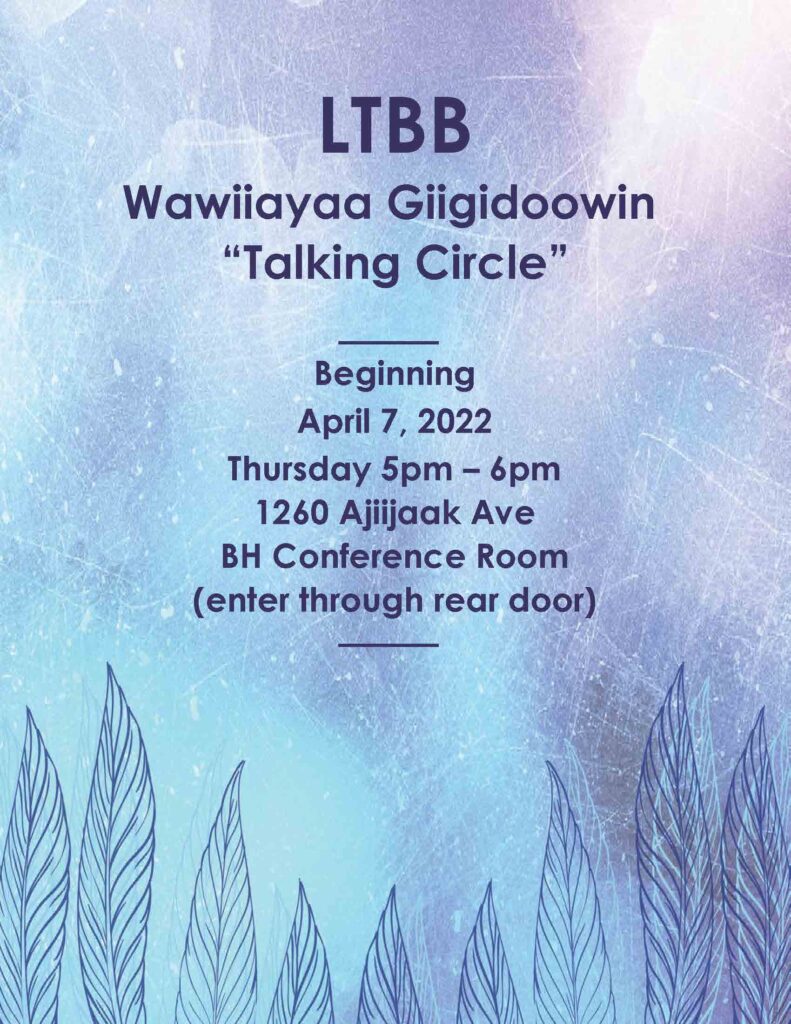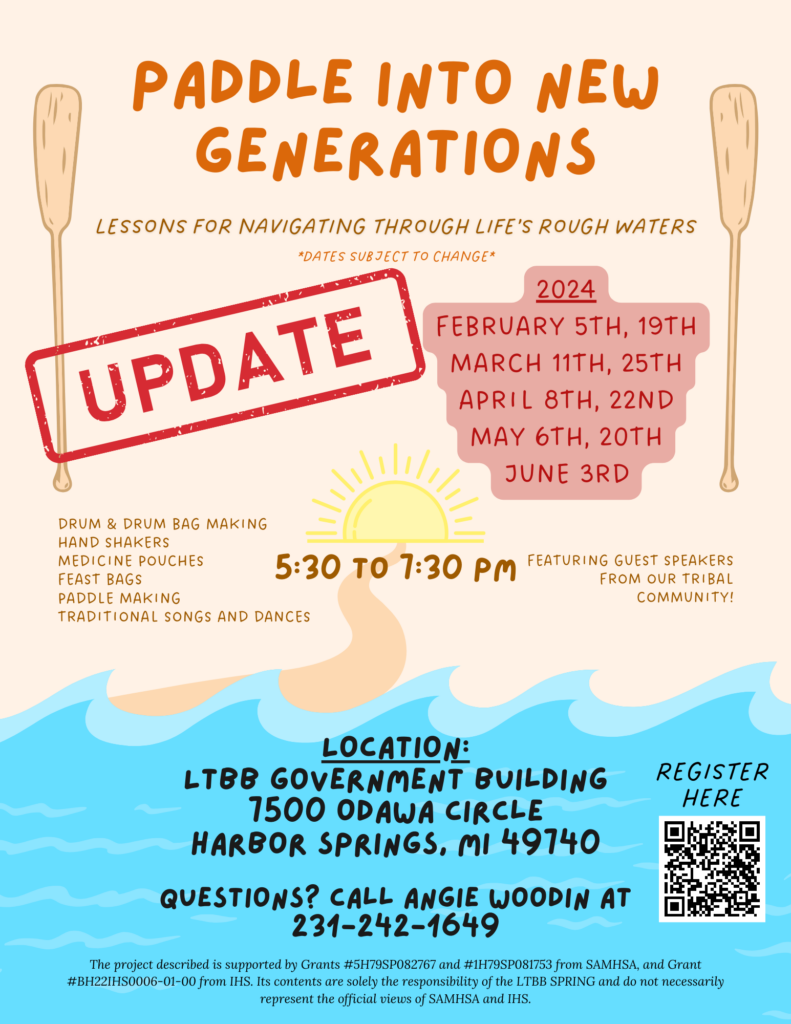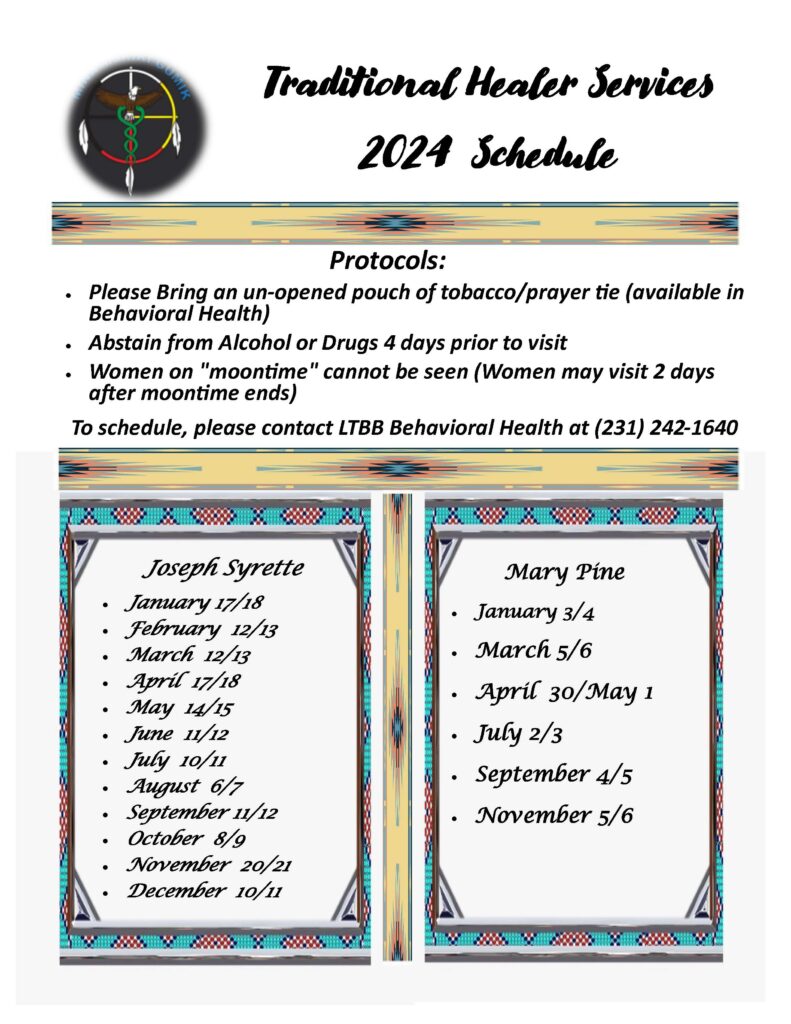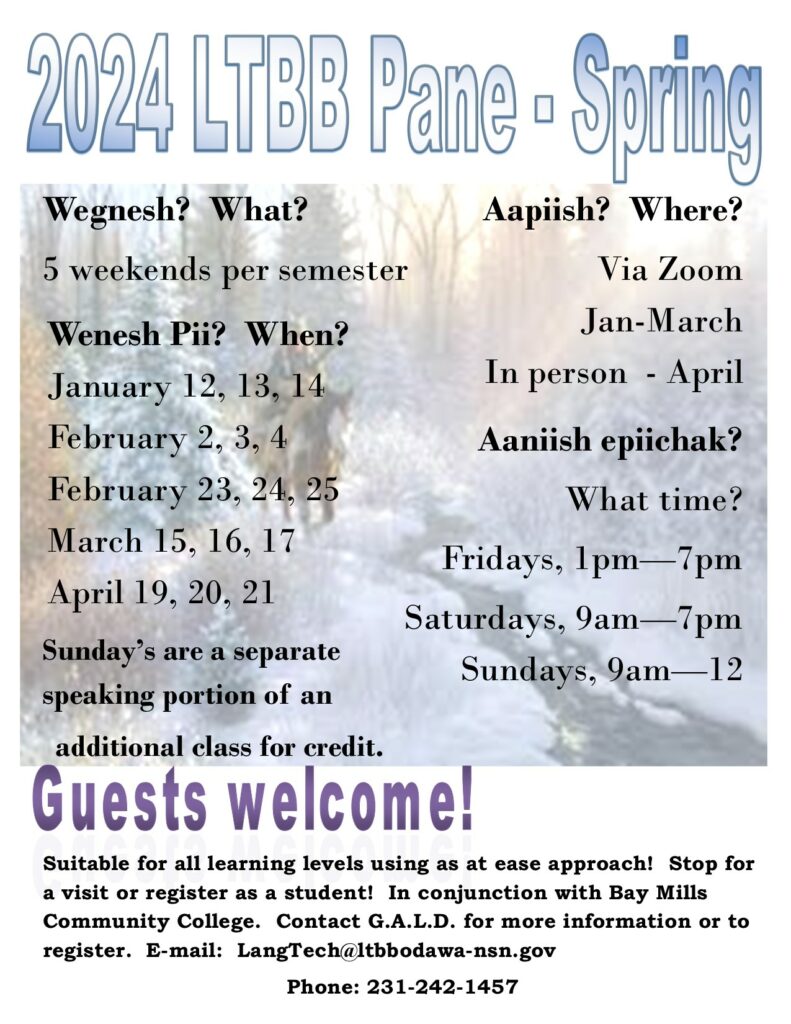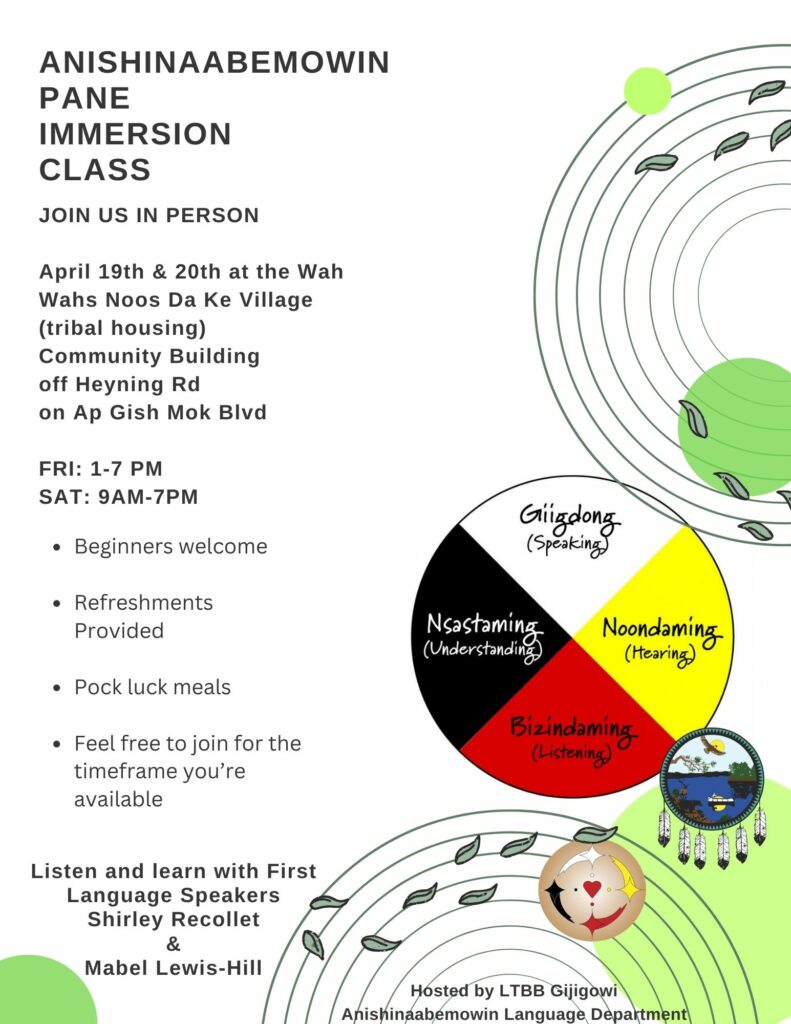Crooked Lake
Wewaagizigamaag Zaagigan
Description and Background
Crooked Lake is part of the 45-mile Inland Waterway. The Inland Waterway begins in Spring Lake from the southern origin and the other origin identified as the beginning of the waterway from the east is Pickerel Lake. Pickerel Lake is connected to Crooked Lake via the Pickerel Channel. Crooked Lake flows into the Crooked River to Burt Lake; Burt Lake flows into the Indian River to Mullett Lake; Mullett Lake connects to Lake Huron via the Cheboygan River.
Historically, Odawa people frequently portaged their canoes over the sand dunes near Petoskey to and from Round Lake, and then followed river courses connecting Crooked, Burt, and Mullett Lakes to Lake Huron. This route was a safer alternative to the perilous journey around Lower Michigan’s northern tip through the open waters of Lake Michigan and Lake Huron.
In the past seven years, information has been collected by the ESP on what waters Tribal Citizens use and what they use them for. In a 2008 survey, Crooked Lake was ranked as the second most used lake by Tribal citizens for fishing, swimming, and boating. This lake is a well-known walleye lake, indicating a viable cool-water fishery. In addition, a Tribal Elder indicated the lake is used for tradition and ceremonial purposes. The lake was the beginning route for the annual Jiimaan (canoe) crossing, which celebrates and recognizes our ancestors’ journeys through the Inland Waterway. The ESP staff are aware of Tribal gatherers collecting aquatic plants from the water for traditional utilitarian objects and art.
Crooked Lake has two basins with a total surface area of 2,360 acres. The LTBB WQPP only monitors on the west basin at the deepest depth. The west basin is 1,642 acres in surface area.
Tribal Uses and Attainment
The primary use for Crooked Lake is SF. Other Tribal uses include CF, IAW, PC (May through October than PSC), TCCU and NU. As mentioned in other water body assessments, the use of SF will need further evaluation as LTBB does not have sufficient information on toxins in fish or how much fish is eaten by Tribal Citizens for subsistence. Crooked Lake was a part of a methyl mercury fish tissue study completed in 2012 in collaboration with the Great Lakes Fisheries Program (GLFP). The GLFP showed concentrations of methyl mercury at the highest of the five lakes monitored. Fish surveys in the past by the State of Michigan Department of Natural Resources and fisherman do catch some cold water fish species such as Brown and Rainbow Trout, therefore, a fishery use of CF was applied versus a CLF even though the diversity of the fish population tends to be warm or cool water species. All uses are supported except for SF which needs further evaluation through research on toxin concentrations in fish tissue and better understanding on how much fish subsistence families eat.
LEGEND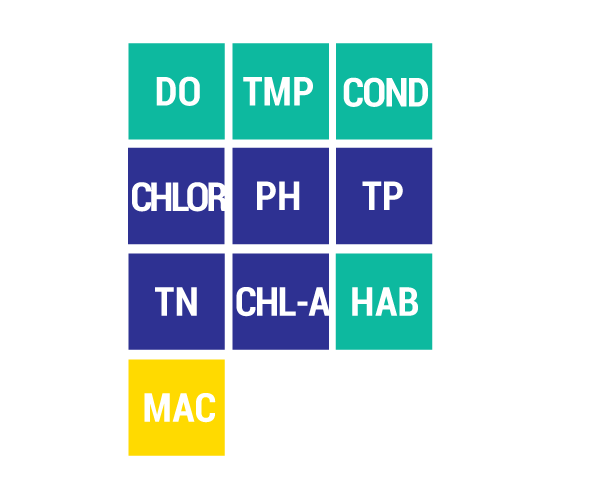
DO Dissolved Oxygen
Respiration for fish, other aquatic organisms
TEMP Temperature
General aquatic life support and reproduction
COND Conductivity
General aquatic life support, dissolved solids indicator
CHLOR Chlorides
General life support, salinity indicator, drinking water pollutant
PH Potential Hydrogen Ion Concentration
Acidity/alkalinity indicator, drinking water pollutant
TP Total Phosphorous
Major algae nutrient, fertilizer/manure runoff indicator
TN Total Nitrogen
Major algae nutrient, drinking water pollutant, fertilizer/manure runoff indicator
CHL-A Chlorophyll-a
Algae concentration indicator
HAB Habitat
Instream and riparian structure to support life cycles of fish and other organisms
MAC Macroinvertebrates
Indicator of water quality based on the diversity of pollution tolerant and intolerant
aquatic insects and non-insects that are visible to the naked eye and do not have a backbone
TSS Total Suspended Solids
Indicator of aquatic life support, oxygen levels
FQA Floristic Quality Assessments
Indicates quality of wetland based on the plant community present
CONDITION INDICATORS
Poor Fair Good Very Good



